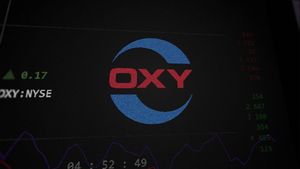
Liège, Belgium – October 2, 2025 – EVS (Euronext: EVS), a global leader in live video production technology, has today officially unveiled its groundbreaking 'T-Motion' robotics division, marking a pivotal moment in the evolution of media production. This strategic move, underpinned by the recent acquisitions of U.S.-based Telemetrics and French innovator XD Motion, propels EVS into the forefront of the burgeoning media production robotics market, promising to redefine live content capture with advanced indoor and outdoor solutions.
The launch of 'T-Motion' on October 1, 2025, with its public announcement today, signifies EVS's aggressive expansion into a new total addressable market. By integrating cutting-edge robotics with its established ecosystem, EVS aims to meet the escalating demand for automated, high-precision, and efficient live video production tools. This bold initiative is set to enhance operational reliability, expand creative possibilities, and ultimately deliver more compelling live experiences for audiences worldwide.
A New Era of Automated Production: EVS's Strategic Foray
The genesis of EVS's 'T-Motion' division is rooted in a meticulously executed strategy involving two key acquisitions that have significantly augmented its technological capabilities and market reach. The journey began on August 19, 2025, with EVS announcing its agreement to acquire Telemetrics, a specialist in indoor media production robotics based in the United States. This acquisition, which officially closed on October 1, 2025, immediately bolstered EVS's automation offerings, particularly strengthening its presence in the crucial North American market. Telemetrics brings not only expanded automation capabilities but also increased production capacity within the U.S., offering EVS the flexibility for U.S.-based product assembly and potentially mitigating tariff-related challenges.
Following swiftly, EVS revealed its second strategic acquisition on September 11, 2025, during the prestigious IBC show: the French company XD Motion. This transaction also culminated on October 1, 2025, perfectly complementing the Telemetrics deal by extending EVS's expertise into outdoor robotics solutions. XD Motion is renowned for its innovative control systems that facilitate secure outdoor media production robotics, including aerial filming and multi-dimensional tracking using advanced equipment such as cable cams, robotic arms, and drones. The integration of XD Motion's capabilities means EVS can now offer a truly comprehensive suite of both indoor and outdoor media production robotics.
With both acquisitions finalized and their respective teams seamlessly integrated into the EVS group on October 1, 2025, the 'T-Motion' division is poised to leverage EVS's existing AI technologies. This synergy is expected to foster the development of a new generation of integrated tools, enabling unparalleled precision and creative freedom for customers across diverse sectors, including broadcast, legislative, defense, and education. The initial market reactions, while not yet fully reflected in stock movements, are largely positive within industry circles, viewing this as a significant step for EVS to solidify its position as a holistic provider of live production technology. Telemetrics reported $12 million in revenue in 2024 and was projected to contribute an additional $2.5 million to $3 million to EVS's Q4 2025 revenue, while XD Motion's annual revenue was approximately €4 million, with an enterprise value of over €3 million plus potential earnout.
Market Repercussions: Winners and Losers in a Shifting Landscape
The launch of EVS’s (Euronext: EVS) ‘T-Motion’ division and its strategic acquisitions of Telemetrics and XD Motion are set to send ripples across the media production technology landscape, creating clear potential winners and losers. EVS itself is undoubtedly positioned as a major winner. By integrating advanced robotics, EVS significantly expands its product portfolio beyond its traditional live production servers and content management systems. This diversification into high-growth robotics not only opens new revenue streams but also strengthens its competitive edge by offering end-to-end solutions that few competitors can match. The synergy between its existing LiveCeption, MediaCeption, and MediaInfra ecosystems and the new robotics capabilities will allow EVS to offer more comprehensive, integrated workflows, making its offerings more attractive to broadcasters and content creators seeking efficiency and innovation.
Companies that have historically specialized solely in broadcast automation or robotics, particularly those with a narrower focus on either indoor or outdoor solutions, may find themselves at a disadvantage. Competitors such as Ross Video, Grass Valley (a Belden (NYSE: BDC) brand), and Sony (NYSE: SONY), which also offer various levels of automation and production tools, will now face a more formidable and integrated competitor in EVS. While these companies have their own robust offerings, EVS’s move towards a complete indoor-to-outdoor robotics solution, coupled with AI integration, could force them to accelerate their own development or seek similar strategic acquisitions to remain competitive. Smaller, niche robotics providers in the media space might also struggle to compete with the combined R&D, market reach, and financial backing of the new EVS ‘T-Motion’ powerhouse.
Conversely, technology partners specializing in AI, sensor technology, or advanced control systems could find new opportunities working with EVS as it further develops its robotics capabilities. The increased demand for integrated and automated solutions might also benefit system integrators who can help broadcasters implement these complex new workflows. Furthermore, content creators and broadcasters themselves are significant beneficiaries, as they will gain access to more sophisticated, reliable, and versatile tools for capturing live events, ultimately enhancing the quality and dynamism of their productions. This could lead to an overall elevation of production standards across the industry, pushing all players to innovate further.
Broader Industry Significance: A Paradigm Shift in Live Production
EVS's bold move with 'T-Motion' is not merely an expansion of its product line; it represents a significant acceleration of broader industry trends towards automation, remote production, and AI-driven workflows in media. The demand for dynamic, high-quality live content continues to surge, from sports and news to entertainment and corporate events. Traditional manual camera operations are increasingly being supplemented or replaced by robotic systems that offer unparalleled precision, repeatability, and safety, especially in challenging environments. This event fits perfectly into the overarching trend of broadcasters seeking to reduce operational costs while simultaneously increasing production value and flexibility.
The potential ripple effects on competitors are substantial. Companies like ChyronHego, Vizrt, and Blackmagic Design (ASX: BMG), which provide various elements of the live production chain, will need to consider how EVS's integrated robotics solutions might impact their market share or create new opportunities for collaboration. The enhanced capabilities of EVS could set new industry benchmarks for automated camera movements and intelligent content capture, potentially pressuring other technology providers to innovate more rapidly in their own automation and AI offerings. Furthermore, the emphasis on both indoor and outdoor solutions from 'T-Motion' highlights a growing market need for versatility, pushing the industry beyond traditional studio-centric robotics.
Regulatory or policy implications might emerge as robotics become more ubiquitous, particularly concerning safety standards for autonomous systems in live environments, data privacy for AI-driven analytics, and potential labor market shifts. While no immediate regulatory changes are anticipated, the increasing sophistication and deployment of these technologies could prompt future discussions around ethical AI use and workforce adaptation. Historically, the broadcast industry has seen similar transformative shifts, such as the transition from analog to digital, SD to HD, and now HD to 4K/IP. Each transition brought new technological leaders and required existing players to adapt or risk obsolescence. EVS's 'T-Motion' launch can be compared to these seminal moments, signaling a new chapter where robotics and AI become as fundamental to live production as the cameras and switchers themselves.
The Road Ahead: Opportunities and Challenges for a Robotic Future
Looking ahead, the short-term possibilities for EVS’s (Euronext: EVS) ‘T-Motion’ division are centered on seamless integration of the acquired technologies, rapid product development, and aggressive market penetration. EVS will likely focus on leveraging the combined expertise of Telemetrics and XD Motion to quickly roll out new, integrated robotic solutions that showcase the synergies between indoor and outdoor capabilities, enhanced by EVS’s core AI competencies. Expect to see early adoption among existing EVS customers eager to streamline their live production workflows and explore new creative avenues. The immediate challenge will be ensuring a smooth transition for the acquired teams and technologies, maintaining product quality, and effectively communicating the value proposition of the new division to a broader market.
In the long term, ‘T-Motion’ has the potential to fundamentally alter how live content is captured and produced. EVS could become a dominant force in the media robotics space, driving innovation in areas such as fully autonomous live event coverage, advanced volumetric capture for immersive experiences, and remote production from virtually any location. This could lead to significant market opportunities in emerging sectors like virtual production, e-sports, and even industrial applications requiring high-precision visual data capture. Potential strategic pivots might involve deeper collaborations with cloud service providers for remote operations or further investments in machine learning to enhance predictive camera movements and intelligent content framing.
However, challenges persist. Competition in the robotics and automation space is fierce and constantly evolving, with new players and technologies emerging regularly. EVS will need to maintain a high pace of innovation to stay ahead. Furthermore, the cost of implementing advanced robotic systems can be substantial, requiring EVS to offer compelling ROI arguments to potential clients. Market acceptance and overcoming traditional resistance to change within established broadcast workflows will also be crucial. Potential scenarios include ‘T-Motion’ becoming the industry standard for live production robotics, or facing strong competition that necessitates continuous adaptation and further strategic partnerships. The outcome will largely depend on EVS’s ability to execute its vision, innovate consistently, and effectively address customer needs in a rapidly changing technological landscape.
Conclusion: EVS Forges a Robotic Path to Live Production's Future
The launch of EVS’s (Euronext: EVS) ‘T-Motion’ robotics division, following the strategic acquisitions of Telemetrics and XD Motion, marks a definitive and transformative moment for the company and the broader media production industry. The key takeaway is EVS's clear commitment to leading the charge in automated, AI-driven live content capture, effectively expanding its market reach and reinforcing its position as a holistic technology provider. This move is not merely an incremental upgrade but a strategic pivot designed to capitalize on the increasing demand for efficiency, precision, and creative flexibility in live production environments.
Moving forward, the market will undoubtedly be reshaped by EVS's integrated indoor and outdoor robotic solutions. The company's ability to offer a comprehensive suite of tools, from studio automation to complex aerial and cable cam systems, all potentially harmonized by AI, positions it as a formidable force. Competitors will be compelled to innovate or risk being outpaced, while content creators stand to benefit from more dynamic and cost-effective production options. The lasting impact of 'T-Motion' is likely to be a significant acceleration in the adoption of robotics and AI across all facets of live media, setting new standards for how engaging content is brought to audiences.
Investors should closely watch EVS’s integration progress, the speed of new product development within the ‘T-Motion’ division, and early customer adoption rates. Key metrics will include revenue contributions from the new division, its impact on EVS's overall profitability, and how it influences the company's competitive standing against traditional and emerging players in the broadcast and robotics sectors. The coming months will be critical in demonstrating the full potential of this ambitious venture and solidifying EVS’s leadership in the future of live production.
This content is intended for informational purposes only and is not financial advice





